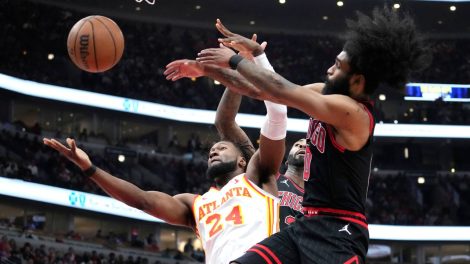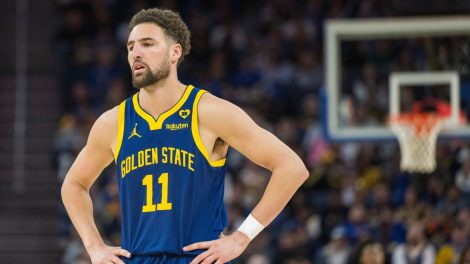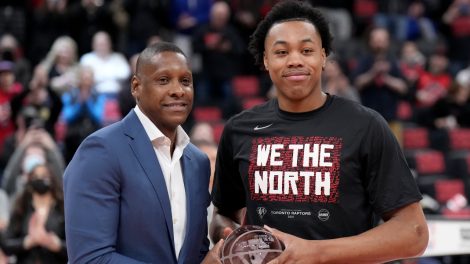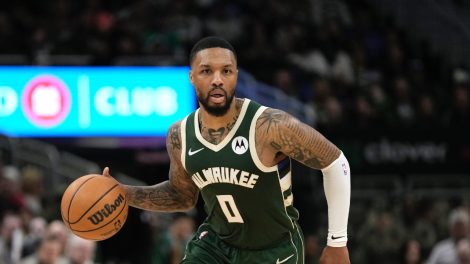TORONTO — A quick, unabridged catalogue of currently injured Toronto Raptors: Dewan Hernandez (sprained thumb), Serge Ibaka (sprained ankle), Stanley Johnson (stress reaction in groin), Kyle Lowry (fractured thumb), Patrick McCaw (knee surgery), Matt Thomas (fractured finger).
That’s more than a third of Toronto’s roster — whether you include the club’s pair of two-way players or not — watching its games in street clothes. That the Raptors have won four in a row, five of their last six, and eight of their last 10, with victories over the Los Angeles Lakers and Philadelphia 76ers in the process, is a testament not only to the club’s depth of talent, but to the ability of its coaching staff to maximize results from a minimized roster.
It’s not only head coach Nick Nurse. It’s his lead assistants, too. Old friend Nate Bjorkgren came up with Nurse years ago in the D-League and now sits next to him on the Raptors bench. International icon Sergio Scariolo, who has led Spain to a World Cup title and a couple Olympic medals. The creative-minded Adrian Griffin, who’s brought ingenuity to Toronto’s defensive schemes much like he did on the floor as a hard-nosed swingman in the early aughts.
[snippet id=4725691]
“Our job is to look at what’s coming at us, talk about the many variations of things that will possibly work defensively, simplify that a little bit, get some type of order in which you may want to use this one and then this one and then this one, and then try to relay that to the team and tell them why,” Nurse said Tuesday, distilling NBA coaching down to something much simpler than it is.
“I’ve said it many times and I should probably say it more often — as far as a coaching staff goes, those guys are big time. All three of those guys — Adrian, Nate and Sergio — they’re all head coach level guys. They take these game plans and they dig into them, and they eat them up and spit them back out to our players in an incredible way, an incredible format. They’re really good, man — they’re really good. That’s all I can say.”
We’re talking about this because Monday’s 101-96 Raptors victory over the 76ers brought a fresh example of the high-level defensive game planning Nurse is referring to. Philadelphia posted a season-low point total, had its second-worst true shooting percentage night of the year (50.5), and was held to six fewer points per 100 possessions than it was averaging coming into the game.
Neither Tobias Harris nor Al Horford could get going. Ben Simmons, Philadelphia’s long, versatile point guard, was bottled up all night by a combination of OG Anunoby and Rondae Hollis-Jefferson, finishing a season-low minus-eight. Joel Embiid, a perennial all-star and MVP candidate, had perhaps the worst game of his career.
Blanketed by Marc Gasol — plus the swarming help of Pascal Siakam, Anunoby, Hollis-Jeferson, and others — Embiid didn’t score a point, suffering a similar fate to several stars the Raptors have slain this month. LeBron James, Damian Lillard, and Nikola Vucevic weren’t nullified to quite the embarrassing extent that Embiid was. But they were far from themselves. And like Embiid, their teams lost.
| Game | Player | FG% | PTS | +/- | TOV |
|---|---|---|---|---|---|
| Nov. 10 vs. LAL | LeBron James | 33% (5-of-15) | 13 | -6 | 2 |
| Nov. 11 vs. LAC | Kawhi Leonard | 18% (2-of-11) | 12 | 12 | 9 |
| Nov. 13 vs. POR | Damian Lillard | 17% (2-of-12) | 9 | -13 | 2 |
| Nov. 20 vs. ORL | Nikola Vucevic | 14% (1-of-7) | 3 | 1 | 0 |
| Nov. 25 vs. PHI | Joel Embiid | 0% (0-of-11) | 0 | -9 | 4 |
“I give credit to our guys to go out there and put the work in. Take [Monday] night, for example. Marc Gasol, he’s as good as it gets, man, as a big-man defender. Combination of size, physicality, IQ, effort — you start listing all those things and your defensive mentality becomes pretty good. And it kind of spreads a little bit, I think,” Nurse said. “That’s where it starts — some willingness, some buy-in, some effort. And then there’s some schemes that you’re using, too. Some of those schemes are really good.”
Some of Toronto’s most effective star-stopping schemes this season have been modifications of zone coverages, not unlike the box-and-one strategy Nurse famously utilized against Steph Curry and the Golden State Warriors during the NBA Finals. Three or four Raptors will hang back in assigned areas around the paint, while one or two of their teammates chase around the opposition’s primary threats, trying to force the ball out of their hands or deny it to them altogether.
That’s what worked against Simmons, who the Raptors frequently picked up and pressured in his own end, taking away the runway he likes to use to build momentum and get going downhill. Meanwhile, Toronto’s collapsing zones eliminated Embiid’s time and space, forcing him to work through traffic towards the basket and try to navigate his way out of traps and double-teams.
The strategies require constant communication, elite athleticism, and sharp basketball IQ, as defenders read and react on the fly to not only how the offence is moving the ball but the decisions their teammates are making in coverage. One miscommunicated rotation or blown assignment can bring down the entire house of cards.
That’s why it’s so important having intelligent players like Gasol and Fred VanVleet on the floor as leaders to quarterback Toronto’s defence. And why it’s crucial to identify the right players when adding from outside the organization, like Hollis-Jefferson, who’s integrated into Toronto’s systems seamlessly, and made a significant impact with defence and energy off the bench.
“Being a defender, I kind of catch onto things on the fly. Understanding how [Nurse] operates and how his mind works, I feel like it helps me because that’s my mindset. It’s defence first — whatever it takes,” Hollis-Jefferson said. “I’m always watching different schemes. I watched a lot of the Raptors in previous years because I liked matching up against them. So, just watching that, and then coming here and talking to coach — you understand and see that.”
Of course, there are drawbacks to putting so much attention on one or two of the opposition’s players. Rebounding will inherently be an issue as some defenders are pulled away from the basket in order to double-team, blitz, and chase around the offence’s stars, while others abandon the paint to close out on shooters. That’s reflected in Toronto’s defensive rebounding percentage (70.7 per cent) which ranks 27th in the league.
And you’re going to give up an above-average amount of three’s, as double-teamed creators turn to the safety valves in their offence — often a shooter camped out on the perimeter. In turn, the Raptors have given up the NBA’s second-most three-point attempts per game (38.4). That’s the trade-off. You take away the unparalleled ability and force of a James or a Leonard or an Embiid, and live instead with the shot-making of their mere mortal teammates.
“I think there was a stretch of that game [Monday] night when they might have hit five or six straight threes. So, it’s a little painful,” Nurse said. “But you’ve just got to ride through that and trust that it’s going to work and pay off. I think, really, all we’re trying to do with some of that stuff is give ourselves a chance to win. Give ourselves a chance at the end to win the game. Give guys all the credit — they’ve gone out there and executed the stuff pretty high-level. And played hard, right? They’re playing hard, man.”
[relatedlinks]
That remains the secret sauce for the Raptors, and the biggest intangible element of their success through this untimely run of injuries — effort. Everyone’s doing their part. Even those injured players.
During Monday’s game, Lowry was an active and engaged presence on Toronto’s bench, constantly getting in the ear of his younger teammates during timeouts about what he was seeing on the floor. When rookie guard Terence Davis wasn’t closing the gaps around Simmons effectively enough, Lowry was quick to point it out. Tuesday, when Lowry noticed the Raptors weren’t running a drill correctly on the practice court, he jumped in to walk his teammates through the proper technique.
“Kyle is a student of this game, honestly. His knowledge for this game is at another level,” Davis said. “His presence, honestly, does a lot, man. Just by him being there. He sees the game. He sees what’s going on. And whenever the time is right, he says what he needs to say.”
Some coaching staffs may not appreciate that level of input from uniformed personnel. But Nurse and co., embrace it. Referring to Lowry as an “assistant coach” on Tuesday — and jokingly describing the guard’s coaching style as “total authoritarian” — Nurse said the team was benefitting from Lowry’s willingness to share what he’s learned over 13 years in the league.
No doubt he’d much rather his team was benefitting from what Lowry can do on the floor. That’ll come soon. But in the meantime, Nurse will settle for one more coach on a staff that’s already getting the most out of a shorthanded roster. And writing the playbook for how to limit some of the league’s greatest stars.









